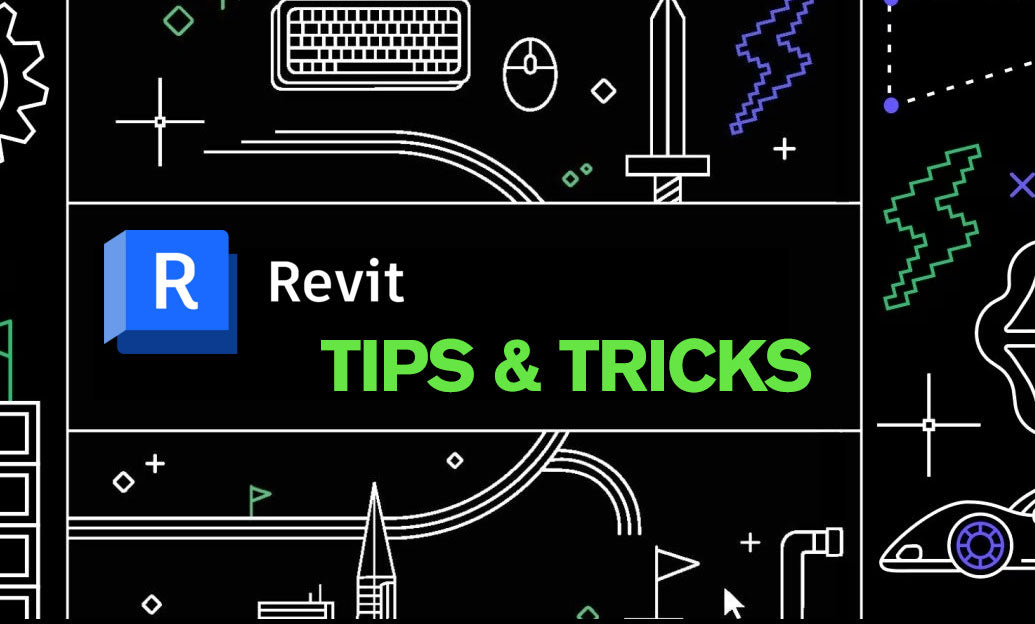Your Cart is Empty
Customer Testimonials
-
"Great customer service. The folks at Novedge were super helpful in navigating a somewhat complicated order including software upgrades and serial numbers in various stages of inactivity. They were friendly and helpful throughout the process.."
Ruben Ruckmark
"Quick & very helpful. We have been using Novedge for years and are very happy with their quick service when we need to make a purchase and excellent support resolving any issues."
Will Woodson
"Scott is the best. He reminds me about subscriptions dates, guides me in the correct direction for updates. He always responds promptly to me. He is literally the reason I continue to work with Novedge and will do so in the future."
Edward Mchugh
"Calvin Lok is “the man”. After my purchase of Sketchup 2021, he called me and provided step-by-step instructions to ease me through difficulties I was having with the setup of my new software."
Mike Borzage
Integrating BIM and IoT: Transforming Building Management with Smart Technologies
September 07, 2024 5 min read


Introduction to BIM and IoT Integration
Understanding BIM (Building Information Modeling):
**Building Information Modeling (BIM)** is a digital representation of the physical and functional characteristics of a facility. It serves as a shared knowledge resource for information about a facility, forming a reliable basis for decisions during its lifecycle. BIM is employed extensively in the construction and architectural industries to enhance project management and coordination.
- Definition and core principles of BIM: BIM involves the generation and management of digital representations of physical and functional characteristics of places. These models are not merely 3D geometric data but also encompass spatial relationships, geographic information, quantities, and properties of building components.
- Current applications of BIM: BIM is used for design visualization, collision detection, construction planning, and facility management. It aids in creating more accurate designs, detecting potential issues before construction starts, and improving overall project efficiency.
- Benefits for project management and coordination: BIM facilitates better collaboration among stakeholders, reduces errors and rework, enhances project visualization, and improves the management of asset information throughout the building's lifecycle.
The Rise of IoT (Internet of Things) in Building Management:
The **Internet of Things (IoT)** refers to a network of physical devices that communicate and exchange data over the internet. In the context of building management, IoT devices and systems are increasingly deployed to create smart buildings that are more efficient, comfortable, and secure.
- Overview of IoT technology and its applications: IoT encompasses a wide range of devices, from sensors and actuators to smart meters and connected HVAC systems. These devices collect and share data, enabling real-time monitoring and control of building environments.
- Examples of IoT devices and systems in smart buildings: Common IoT implementations include smart thermostats, occupancy sensors, lighting control systems, and security cameras. These devices help optimize energy usage, enhance security, and improve occupant comfort.
- The synergy between IoT and building management systems (BMS): IoT devices complement traditional BMS, providing granular insights and control over various building functions. The integration of IoT with BMS leads to more responsive and adaptive building operations.
Benefits of Integrating IoT with BIM
Enhanced Building Performance and Efficiency:
Integrating IoT with BIM significantly enhances building performance and efficiency through real-time data collection and analysis, energy management, and predictive maintenance.
- Real-time data collection and analysis: IoT sensors continuously collect data on various building parameters such as temperature, humidity, occupancy, and energy consumption. This data is fed into BIM platforms for analysis, enabling the optimization of building operations and reducing energy waste.
- Energy management and sustainability: IoT-enabled sensors and controls facilitate precise monitoring and adjustment of energy usage. Through automated systems, buildings can maintain optimal energy performance, contributing to sustainability goals and reducing operational costs.
- Predictive maintenance and issue resolution: IoT devices can detect anomalies in building systems, generating alerts for potential issues before they escalate into significant problems. This proactive approach to maintenance minimizes downtime and extends the lifespan of building systems.
Improved Occupant Experience and Safety:
IoT integration with BIM also enhances the occupant experience and safety through smart building features, safety systems, and personalized environments.
- Smart building features: IoT devices enable a plethora of smart building features such as automated lighting, climate control, and security systems. These features enhance occupant comfort and convenience by adapting to their preferences and needs.
- IoT-driven safety systems: Integrating IoT with BIM improves building safety through advanced fire detection, emergency response protocols, and surveillance systems. These systems ensure rapid detection and response to emergencies, protecting occupants and property.
- Personalized environments: IoT devices can create personalized environments based on individual preferences for lighting, temperature, and air quality. This customization improves occupant well-being and productivity.
Technological Challenges and Solutions
Interoperability and Data Integration:
One of the key challenges in integrating IoT with BIM is ensuring interoperability and seamless data integration across diverse devices and platforms.
- Challenges of integrating diverse IoT devices with BIM platforms: IoT devices come from various manufacturers, each with its own communication protocols and data formats. Ensuring that these different devices can work together within a BIM ecosystem is a significant challenge.
- Standards and protocols for seamless data exchange: To address interoperability issues, industry-standard protocols such as BACnet, KNX, and Zigbee are employed. These standards facilitate consistent and reliable data exchange between IoT devices and BIM systems.
Data Security and Privacy Concerns:
With the proliferation of IoT devices in buildings, data security and privacy have become paramount concerns.
- Risks associated with IoT data in smart buildings: IoT devices can be vulnerable to cyber-attacks, leading to potential data breaches and unauthorized access to building systems. Ensuring robust security measures is critical to protecting sensitive information and maintaining system integrity.
- Best practices for securing IoT networks and BIM data: Implementing strong encryption, network segmentation, and regular security audits are essential practices for securing IoT networks. Additionally, access controls and authentication mechanisms should be enforced to safeguard BIM data.
- Regulatory considerations and compliance: Compliance with data protection regulations such as GDPR and CCPA is crucial for smart building projects. Ensuring that data collection, storage, and processing adhere to legal requirements helps mitigate privacy concerns.
Future Trends and Innovations
Advanced Analytics and AI Integration:
Integrating advanced analytics and artificial intelligence (AI) with BIM and IoT holds immense potential for transforming building management and operations.
- Leveraging AI and machine learning for predictive analytics: AI algorithms can analyze large volumes of data from IoT devices to predict equipment failures, optimize energy usage, and enhance building performance. Machine learning models continuously improve their accuracy over time, providing more reliable insights.
- Future potential of AI-driven decision-making: AI can facilitate autonomous decision-making in smart buildings, enabling systems to adapt dynamically to changing conditions. For instance, AI-driven HVAC systems can adjust settings based on real-time occupancy and weather data, enhancing comfort and efficiency.
Emerging Technologies:
The integration of emerging technologies such as 5G, digital twins, and edge computing further enhances the capabilities of BIM and IoT.
- Role of 5G in advancing IoT applications: The deployment of 5G networks provides faster and more reliable connectivity for IoT devices. This enables real-time data transmission and more responsive building management systems.
- Introduction of Digital Twins: Digital twins are virtual replicas of physical buildings that simulate real-world conditions. By integrating IoT data with digital twins, building managers can perform dynamic simulations and optimize building operations based on real-time insights.
- Innovations in edge computing: Edge computing processes data closer to the source, reducing latency and improving response times. This is particularly beneficial for IoT applications that require real-time decision-making, such as security systems and environmental controls.
Conclusion
Integrating IoT with BIM represents a transformative shift towards smarter, more efficient buildings. The synergy between these technologies enhances building performance, occupant experience, and operational efficiency while addressing challenges related to interoperability and data security. As advanced analytics, AI, and emerging technologies continue to evolve, the future of building management promises even greater innovation and impact. Industry stakeholders are encouraged to embrace and invest in these technologies, paving the way for a new era of intelligent and sustainable buildings.
Also in Design News

Animation for Beginners - Part 2: 12 Animation Principles you NEED to know
January 14, 2025 1 min read
Read More
ZBrush Tip: Enhancing 3D Model Precision with ZBrush's TrimCurve Tool
January 14, 2025 2 min read
Read More
Revit Tip: Utilizing Design Phases to Enhance Revit Project Efficiency and Collaboration
January 14, 2025 1 min read
Read MoreSubscribe
Sign up to get the latest on sales, new releases and more …


